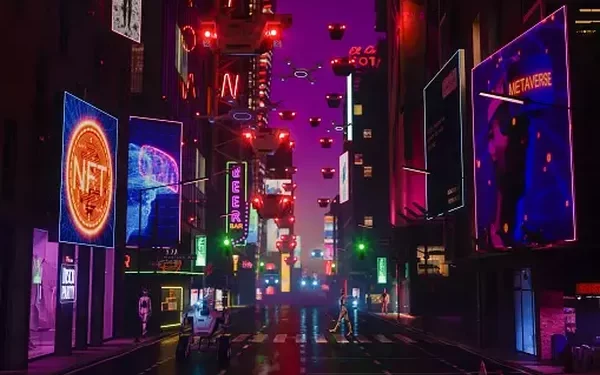A groundbreaking prospect is on the horizon for the MTA – a journey into the metaverse. The Metropolitan Transportation Authority is actively considering methods to extend the city’s renowned subway system into the realm of virtual reality and even onto gaming platforms, a perusal of agency documents has revealed.
In a strategic maneuver aimed at amplifying revenue streams through its iconic brand, the MTA recently initiated a call for potential collaborators. The agency is seeking to partner with enterprises capable of identifying a licensing agent who possesses the acumen to revitalize a three-decade-old licensing initiative. As part of this rejuvenation, the program could encompass novel offerings like video games and immersive virtual reality experiences.
Mark Heavey, the Director of Business Development at the MTA, emphasized that this endeavor carries a dual purpose. It not only aims to bolster the MTA’s revenue streams but also serves to safeguard the distinct visual identity and emblem of the transit system. Heavey commented, “By establishing a clear stance that MTA assets are not part of the public domain, we are not only preserving the authenticity of our assets but also embracing the evolving appetite for interactive virtual environments. The forthcoming generation of riders, particularly the youth of New York City, readily embraces such cutting-edge technologies.”
Engaging in conversations with commuters at various subway stations across Manhattan, The Bronx, and Brooklyn, THE CITY discovered that riders envision an authentic MTA gaming experience encompassing features that mirror real-life scenarios. Delays, re-routings, encounters with rats, and even missed romantic connections emerged as potential inclusions in such a virtual world.
Darin Gilgeours, a 27-year-old subway rider at the Atlantic Avenue-Barclays Center station in Brooklyn, drew a comparison with existing games: “Considering we already have games like Grand Theft Auto that prominently feature violence, an MTA game can hardly fare worse, even if it involves war.”
Joana Flores, spokesperson for the MTA, highlighted the existing robustness of the licensing program. With over 60 licensees presently participating, the program encompasses a diverse range of products. These include official MTA apparel, accessories, replicated station signs, toys, and household items. The revenue generated from this initiative is channeled to support educational endeavors at the New York Transit Museum, as well as initiatives focused on the preservation of MTA’s historical legacy.
This prospective foray into the gaming industry serves as a strategic countermeasure against the proliferation of infringements on MTA’s intellectual property. The rise of print-on-demand technology has amplified such violations, prompting the MTA to explore new avenues for protecting its brand integrity.
Instances of such violations are not uncommon. In 2006, a bagel establishment near the Smith-Ninth Streets station in Brooklyn faced the obligation to conceal its F line logo and other MTA symbols after a cease-and-desist order was issued. Similarly, in 2018, the creators of “MTA Country,” an 8-bit video game, found themselves at odds with MTA lawyers. The game, featuring prominent figures like Andrew Cuomo, Bill de Blasio, and Gregg T., incorporated the MTA logo and involved navigating through graffiti-laden tunnels while evading track fires and pizza-loving rats. The game’s objective was to accumulate subway tokens and letters to spell “Privatize” and access a hyperloop-inspired transit system.
Chris Baker, one of the minds behind “MTA Country,” reflected on the encounter with MTA lawyers. Although not recalling any punitive consequences, Baker, now residing in California, noted the abundance of intriguing elements within daily commutes that could fuel the creation of multiple subway-themed video games. Drawing parallels to the “RollerCoaster Tycoon” series, Baker envisioned the potential of a transit-oriented game akin to a “MTA Tycoon,” which he speculated could be a blockbuster hit.
Even the realm of cinema has featured MTA-like elements, underscoring the ubiquity of the MTA’s brand. In the recently released movie “Indiana Jones and the Dial of Destiny,” scenes depicted MTA-like trains and station signs. However, the MTA confirmed that no financial transactions occurred with the filmmakers, and the logos were digitally integrated during post-production. Remarkably, the scenes were shot within a soundstage, complete with a true-to-life replica of a subway station.
Lisa Daglian, the Executive Director of the Permanent Citizens Advisory Committee to the MTA, hailed the agency’s exploration of gaming as a shrewd avenue for capitalizing on its assets. She affirmed, “The potential returns from gaming and the metaverse are evidently substantial. It’s only fitting for the MTA to capitalize on this opportunity.”

















